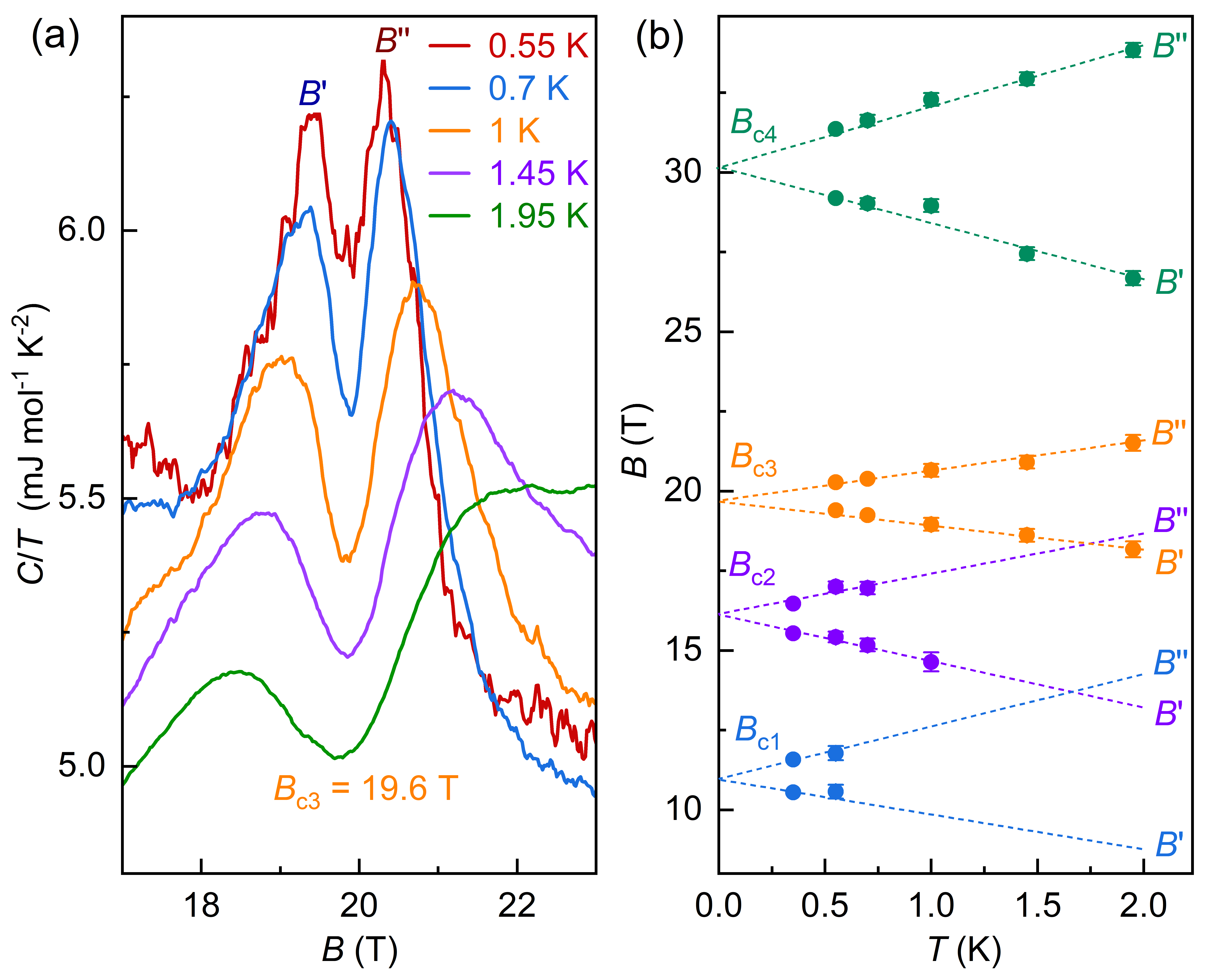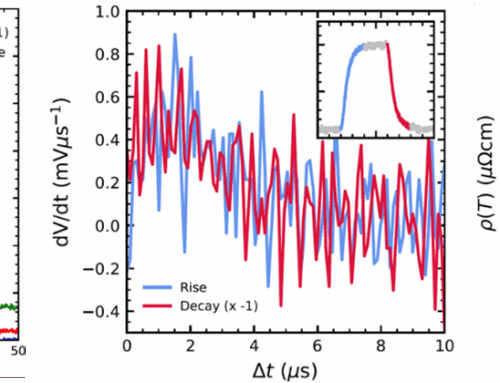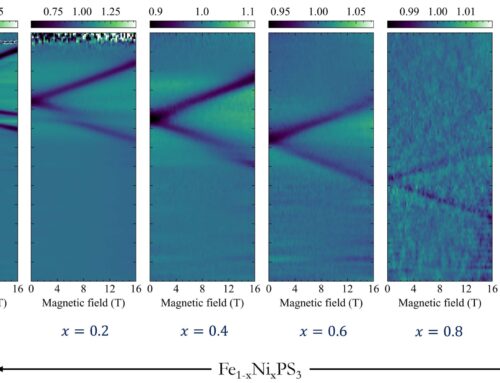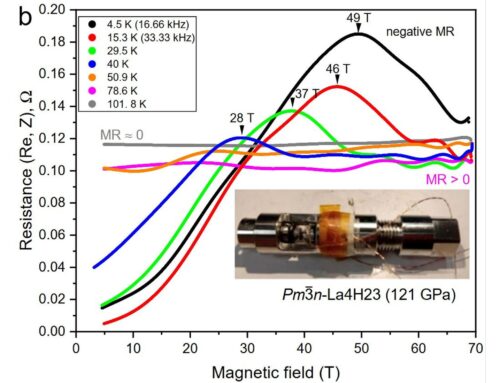Zhuo Yang and Yoshimitsu Kohama, ISSP at University of Tokyo, Japan, Duncan K. Maude, LNCMI-Toulouse, Christophe Marcenat, CEA, IRIG, and PHELIQS, Grenoble.
In the mixed-valence compound YbB12, thermal-conductivity measurements at low temperatures reveal highly mobile excitations that carry heat like in a metal but do not conduct electricity. The Wiedemann-Franz law, which relates the thermal and electrical conductivity, is violated in this material by many orders of magnitude. This leads to the fundamental question of whether electrically neutral excitations in an insulator, which nominally do not have a direct orbital coupling to an external magnetic field, can nevertheless display peculiar thermodynamic signatures characteristic of metals.
In this work, we report a sequence of increasingly pronounced singularities in both the specific heat (C) and the magnetocaloric effect (MCE) within the insulating phase of YbB12. These features, characterized by a series of double-peak anomalies in the specific heat suggest an underlying fermionic density of states (DOS). The Hall resistivity evolves smoothly across these field values, ruling out an electronic origin for these anomalies and suggesting a distinct fermionic contribution to the singular DOS in YbB12.
As we previously demonstrated for graphite, YbB12 shows double-peak structures in C/T (figure (a)) that provides direct evidence for the existence of singularities in the fermionic DOS. We plot the positions of the double-peak structures versus temperature in panel (b). The splitting of the double peak decreases linearly with decreasing temperature, vanishing at T = 0. The central field of the double peaks remains constant and coincides with the entropy maximum observed in the MCE. The overlap of the DOS and the derivative of the Fermi-Dirac distribution (kernel function) features two local maxima at the fields B’ and B’’, which controls the double-peak structure of C/T. The observation of a double-peak structure in C/T that disperses linearly with increasing temperature is strong evidence for the existence of fermionic quasiparticles in the bulk, which is remarkable given the absence of an electronic DOS in the insulating bulk of YbB12.

Figure: Fermionic quasiparticle origin of the double-peak structure in C/T. (a) Specific heat C/T as a function of magnetic field at the indicated temperatures. (b) Measured magnetic field positions of the double peaks as a function of temperature for the anomalies in C/T.
Evidence for large thermodynamic signatures of in-gap fermionic quasiparticle states in a Kondo insulator, Z. Yang, C. Marcenat, S. Kim, S. Imajo, M. Kimata, T. Nomura, A. De Muer, D. K. Maude, F. Iga, T. Klein, D. Chowdhury, and Y. Kohama, Nat. Commun. 15, 7801 (2024).
https://www.nature.com/articles/s41467-024-52017-x
Contact: zhuo.yang@issp.u-tokyo.ac.jp






